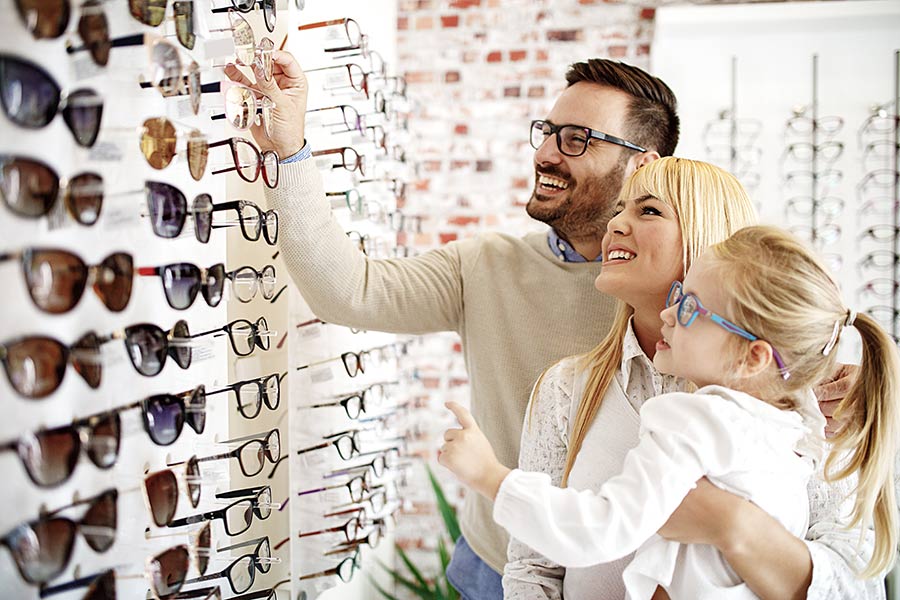What To Know About Progressive Glasses

Progressive eyeglasses contain three prescription lenses and form an all in one pair of glasses. The benefit of progressive glasses is that they can be used in all environments. From reading to computer work to driving. Progressive eyeglasses with multifocal lenses are a convenient, one-stop solution for those with vision problems.
Progressive lenses are a fairly new development on bifocal and trifocal lenses. These types of glasses, in comparison, are inconspicuous passing as regular eyeglasses, without anyone ever knowing that they are multifocal lenses.
What is Presbyopia?
Progressive lenses are often prescribed for those who have blurry vision during activities such as reading. Blurry, close-up vision is often diagnosed as presbyopia, an age-related condition that occurs when the eyes lose the ability to focus on close up objects.
The Benefits
The obvious benefit of progressive lenses is that you only need one pair of glasses. Progressive lenses also help to mimic more natural vision as you can fluidly engage in different activities without a thought about swapping your eyewear. With bifocals and trifocals, vision changes tend to jump, but with progressive lenses, the transition is much smoother. Progressive lenses are functional and have no visible lens line.
The Drawbacks
If you are used to using specific glasses for specific reasons then it may take a little time to adjust to progressive lenses. The lenses themselves are designed to accommodate for each vision need, with the lenses split into sections. The lower lens is suited to reading, the middle for distance, and somewhere in between is a section for computer use. You may find that you initially feel nauseous and/or sick during the adjustment period. These feelings should subside as you get used to using the glasses. You may notice some peripheral vision distortion.
While progressive lenses provide many benefits for the wearer, they do not come without cost. These lenses can easily cost $100 more than bifocals.
Types of Progressive Lenses:
1. Standard Progressive Lenses
These glasses are similar to bifocals, but with all the benefits of progressive lenses. They are affordable and work best in longer frames, as short frames can cut off part of the visual scope.
2. Short Corridor Progressive Lenses
Unlike with standard progressive lenses, short corridor progressive lenses are designed to fit smaller frames. This type of lens may be more appealing to the style conscious, but with this comes a heftier price tag. These lenses have a narrower reading vision space so you’ll need to adjust your use accordingly.
3. Computer Progressive Lenses
These lenses are designed to be used in the office and for computer work. They are ideal for those who need good vision for the near distance. They are mid-range in price and are best suited to office workers, artists, hairdressers, and mechanics.
4. Premium Progressive Lenses
These lenses have a wide reading space. Premium progressive lenses can be customized to suit the frames of your choice and are produced based on your prescription to provide a more accurate lens for each eye. You do get what you pay for, and these lenses can cost several hundreds of dollars.
5. Ground-view Progressive Lenses
If you are active, these lenses are ideal, as they possess patented distortion reduction technology which is ideal for exercise and movement. They are designed to resemble natural ground view vision. These lenses are mid-range in price.
If you would like to find out more about progressive eyeglasses or to book in a comprehensive eye exam, contact the vision experts at Eyelux Optometry. We offer a range of eye exams and vision solutions that are designed to optimize your eye health.

